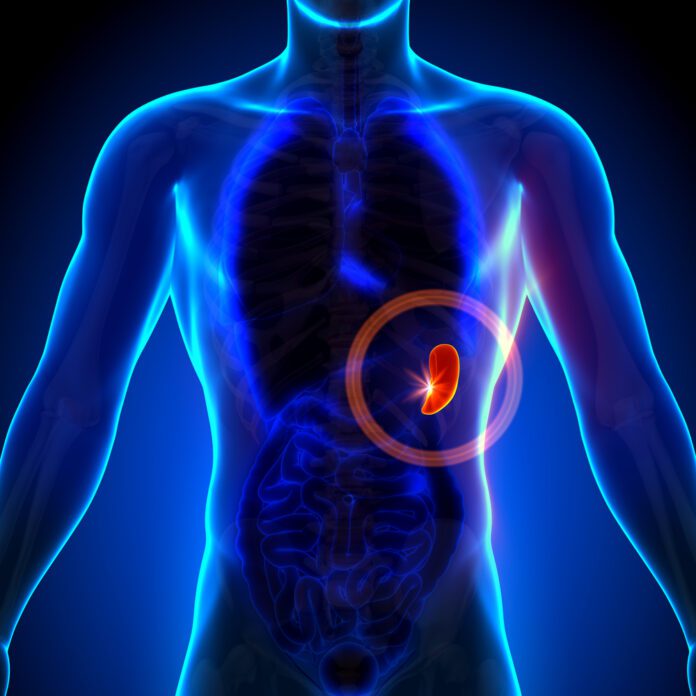Overview Of Abercrombie’s Disease
Abercrombie’s disease occurs when amyloid, an abnormal protein, deposits in various tissues. These deposits cause damage and degeneration of the affected tissues. The areas affected most often are the kidneys, liver, and spleen, although the degeneration can happen anywhere in the body. The affected tissue cannot function normally, sometimes completely. The symptoms of this disorder are often difficult to detect, so it is not uncommon for the disorder to escape diagnosis until after significant damage has occurred. Amyloidosis, waxy disease, Abercrombie’s syndrome, cellulose disease, bacony disease, lardaceous disease, hyaloid disease, and Virchow’s syndrome are other names for this disorder.
Causes Of Abercrombie’s Disease
Amyloid deposits arise from a wide variety of proteins. However, only a few select ones lead to major health concerns. The type of protein and where it collects in the body determines the type of Abercrombie’s disease you have (from here on out referred to as “amyloidosis” for naming convention’s sake). These proteins may collect in only one area, in several areas, or throughout the body.
The different varieties of amyloidosis include:
AL amyloidosis (immunoglobulin light chain amyloidosis). Most commonly diagnosed, this variety was once called primary amyloidosis. The person’s bone marrow creates abnormal antibodies that cannot be broken downbecause of a specific protein, called “amyloid light chains” (referred to as AL). Multiple myeloma, a blood cancer, is often associated with this disease. However, it also affects the heart, liver, nerves, intestines, and kidneys. The cause of this condition is still currently unknown.
AA amyloidosis. This condition, once known as secondary amyloidosis, occurs due to other co-morbid inflammatory diseases or chronic infections. Examples of these include Crohn’s disease, rheumatoid arthritis, or ulcerative colitis. The “AA” refers to the amyloid type A protein, which is what causes this type of amyloidosis. It most often impacts the kidneys, but it can also affect the liver, heart, and digestive tract.
Also:
Familial/hereditary amyloidosis. This form is rare and passed down genetically. It is possible to see it throughout family lines. It affects the nerves, heart, liver, and kidneys most often. One example of a possible genetic defect that can cause this variety is an abnormal protein, such as transthyretin (TTR). Other genetic abnormalities are linked to developing amyloidosis as well.
Age-related (senile) systemic amyloidosis. Abnormal deposits of a normal form of the protein TTR in the heart and other tissues cause this variety. It most commonly affects older men.
Organ-specific amyloidosis. This variety deposits amyloid protein into specific singular organs, such as the skin (cutaneous amyloidosis).
Various research studies have linked myloid deposits to Alzheimer’s disease. However,amyloidosis rarely affects the brain, even when it spreads throughout other body tissues.
Symptoms Of Abercrombie’s Disease
The specific tissues or organs affected causes the symptoms of Abercrombie’s disease to vary. Those with this condition are often also suffering from other diseases concurrently. The specific symptoms of Abercrombie’s disease are easy to overlook. Often, the symptoms are related to the organ(s) it affects. For example, those who have Abercrombie’s disease of the kidneys may notice increased urine production, edema, diarrhea, vomiting, or bad breath. These symptoms are important to keep in mind, because they also show up with other varieties of the disease. Anemia is a symptom of importance as well.
The symptoms of Abercrombie’s disease are more easily visualized within the affected person’s body. The organs affected by the disease will often become enlarged, hard, and smooth-textured. The organ or tissue will take on a white/yellow translucent appearance, similar to a bacon rind. When the muscular overlays of an artery or blood vessel are affected, the tissue thickens then appears transparent. This explains the appearance previously given. Commonly affected organs include the kidneys, pancreas, spleen, and liver. However, Abercrombie’s disease can affect almost any tissue or organ.
Treatment
The most important aspect of treatment of Abercrombie’s Disease involves the improvement of the patient’s blood, including the removal of any/all septic material. Iron and other therapies will treat anemia, which is an important symptom. This restores the oxygen-carrying capacity of the blood. Echinacea, polymnia, burdock, phytolacca, stillingia, corydalis, baptisia, yellow dock, and dandelion are some suggestions of vegetable and herb remedies. Other remedies include hydrastis, glycerophosphates, and strychnin.
A nutritious diet and regular exercise prevent further degeneration of the affected tissues and organs.
Other
Studies to find new and effective treatments are ongoing. Research efforts focus on how amyloid formation can be stopped, and why some types of amyloid are damaging and others are harmless.
Early diagnosis and treatment are crucial, as Abercrombie’s disease can be fatal, especially if it affects the kidneys or heart.



